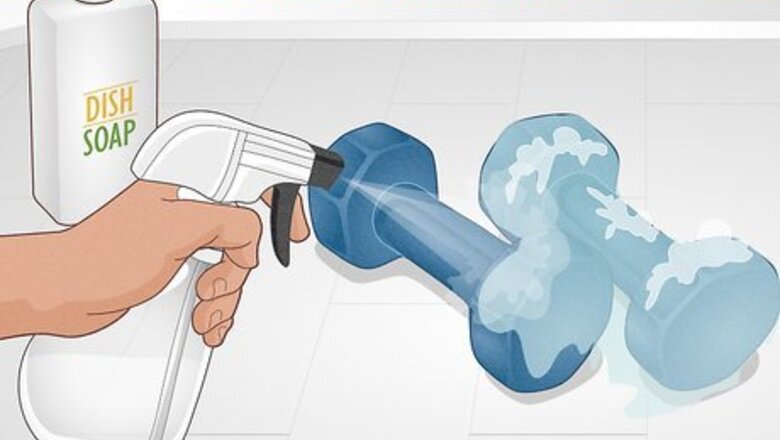
views
- Clean dumbbells by wiping them with soap and warm water. Don’t submerge them, as this causes rust.
- Dry most dumbbells with a clean cloth or towel instead of air drying to prevent rust. You can air-dry rubber dumbbells.
- Soak dumbbells in vinegar and water to loosen rust, then scrub the rest away with a wire brush.
How to Clean Neoprene, Rubber, & Vinyl Dumbbells
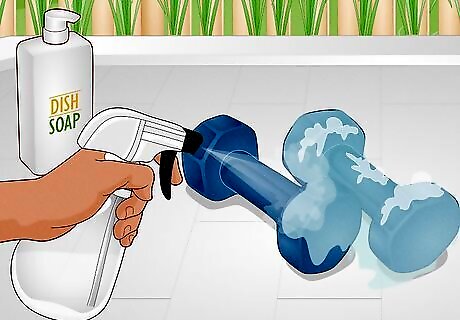
Wipe or spray the dumbbells with soap and water. For neoprene or rubber dumbbells, fill a bowl or basin with warm water and a squirt of dish soap, then dip a soft cloth or sponge into the mixture and gently scrub the dumbbell. For vinyl dumbbells, fill a spray bottle with warm water and a drop or two of dish soap, then lightly spray the dumbbell and wipe it with a microfiber cloth. Neoprene is a synthetic rubber that protects dumbbells from scratches and general damage. It has a smooth texture, and most dumbbells have the word “neoprene” molded into the rubber if they’re made of the material. Pay special attention to crevices and knurling when wiping the dumbbells. Avoid using harsh chemicals as they could damage the material of the dumbbells. Don’t soak or oversaturate vinyl dumbbells, as too much soap will damage the vinyl. A light mist will suffice.

Rinse and dry the dumbbells with a clean, damp cloth. Wipe the dumbbells to remove the soapy residue, then immediately dry them with a lint-free microfiber towel to prevent water spots and protect the material. Do not allow neoprene or vinyl dumbbells to air dry. However, you can air dry rubber dumbbells if you prefer. Repeat this cleaning process weekly to remove grime build-up and keep the material supple. Weekly cleaning with soap and water should do a good job of removing bacteria, but you can also wipe the dumbbells down with alcohol-free disinfectant wipes after each workout to keep them extra clean.

Apply protectant spray or rubber conditioner. Depending on the material of your dumbbells, spray or coat them with neoprene or vinyl protectant spray or rubber conditioner. This should typically be done once a month to maintain the dumbbells’ coating and repel dirt and oils. Follow the instructions provided with your protectant to correctly apply a thin coat.
How to Clean Adjustable Dumbbells
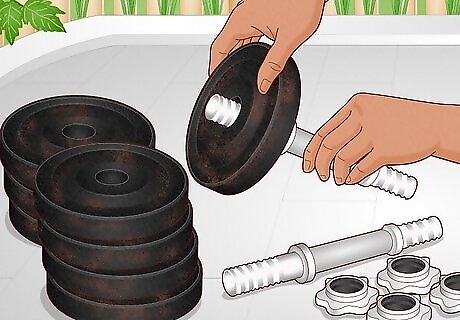
Remove the weight plates. Because the different parts of adjustable dumbbells are made of different materials, disassembling them before cleaning ensures you’ll be able to clean each part thoroughly.

Scrub the weight plates with soap and water. In a bucket or basin, mix a small amount of mild detergent with water. Dip a sponge or cloth into the water and gently scrub the weight plates, paying particular attention to stubborn areas.
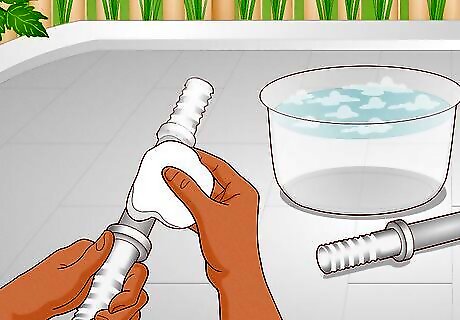
Wipe down the gripping bars. Use a sponge or cloth to clean the gripping bars with the soapy water. Make sure to clean the entire length of the bars, including the area where the weight plates attach.
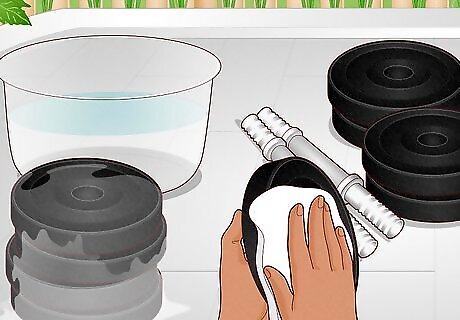
Rinse and dry all the parts. Rinse both the weight plates and the gripping bars with clean water, removing all the soapy residue. Then, thoroughly dry each piece with a clean, dry cloth to prevent rust and other moisture-related issues.

Reassemble the dumbbells. Once everything is dry, reattach the weight plates to the handles. For regular maintenance, wash your dumbbells after every few workouts to prevent grime build-up, and wipe them down after each use to remove sweat and moisture.
How to Clean Iron Dumbbells
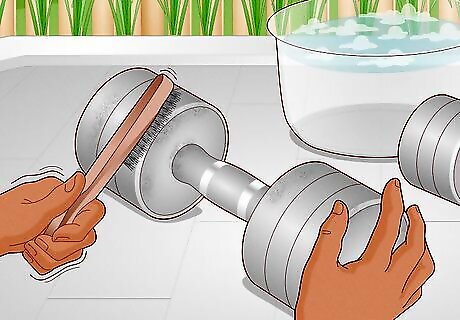
Scrub the dumbbells with a wire brush and mild soap. Mix a few drops of dish soap with warm water to create a mild soap solution. Dip your wire brush into the mixture and scrub your dumbbell to remove chalk, sweat, and any other dirt or debris. Chalk holds moisture and bacteria, so it’s important to remove it all when cleaning.
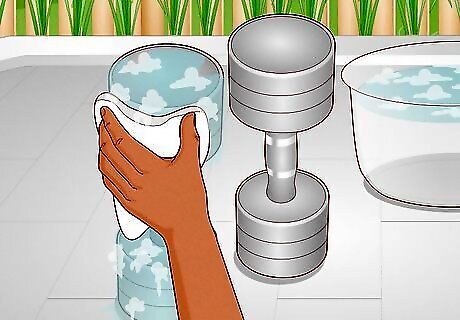
Wash and rinse with a damp, soapy cloth. After you’ve scrubbed away the visible chalk and dirt, dip a cloth into your soap solution and wipe down the dumbbells. Then, dampen another cloth with clean water to rinse off any soapy residue. Use another clean, dry cloth to dry the dumbbell.
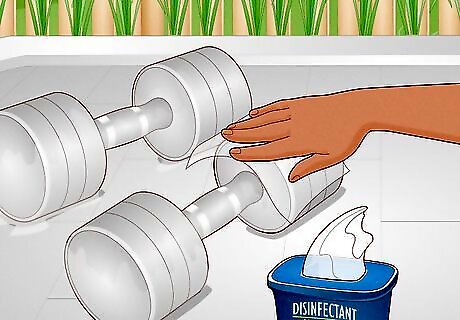
Disinfect the dumbbells with a cleaner or wipe. It’s best to use a product specifically made to clean gym equipment, but you can use any EPA-approved disinfectant wipe. If you use a cleaner, be sure it’s alcohol, bleach, phenol, and ammonia-free. Apply the disinfectant per its instructions and leave it on for the amount of time specified.

Dry the dumbbells with a cloth. Do not allow iron dumbbells to air dry, as this can lead to rust. Instead, wipe away any excess disinfectant with a clean, dry lint-free cloth. Be sure they’re completely dry before putting them away.
How to Remove Rust from Dumbbells

Scrub the rust with sandpaper or a wire brush. Use a fine-grit sandpaper or a wire brush to scrub off noticeable rust and prep the surface.

Soak the dumbbells in vinegar and water. Fill a sink or basin with a half-water, half-vinegar solution and let your dumbbells soak for 24-48 hours. If they’re extra rusty, allow them to soak for up to 72 hours. The acid in the vinegar will dissolve the rust. When you’re finished with the vinegar solution, don’t dump it in your yard, as it could kill your grass. Instead, pour it down a large drain.

Scrub off the remaining rust with a wire brush. After you remove the dumbbells from the solution, grab a wire brush to remove the rest of the rust. For stubborn spots, try applying WD-40 or a similar lubricant to loosen the bonds between the rust and the metal.
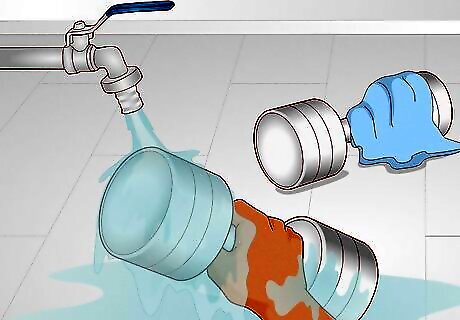
Rinse and dry the dumbbells. Run the dumbbells under clean water to remove any residue, then dry them with a towel immediately.

Apply a rust protector. Choose either a 3-in-1 oil or silicone-based rust protector and brush or spray on a thin coat. This helps prevent rust in the future.

Spray paint the dumbbells (optional). Make sure your dumbbells are completely dry before painting. While this step is optional, repainting your dumbbells removes pitting and makes them look better. It also extends their lifespan as the paint protects the iron from moisture. Spray paint one side of each dumbbell and let it dry completely before painting the other sides.













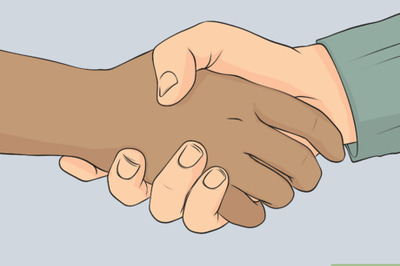




Comments
0 comment